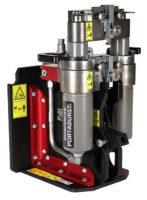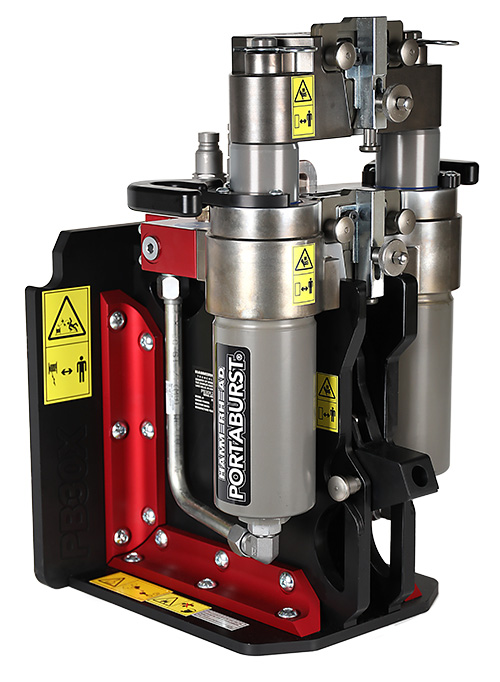https://vimeo.com/1053954636 This Weekly Update is powered by our partners at Milwaukee Tool. Did you know that five United Association of Union Plumbers and Pipefitters (UA) members were on that fateful flight in which a passenger jet collided with a military helicopter midair? They are: Jesse Pitcher, UA Local 5; Charlie McDaniel, UA Local 602; Jonathan D. Boyd, UA Read more
heating and cooling

This Weekly Update is powered by our partners at Milwaukee Tool.
Did you know that five United Association of Union Plumbers and Pipefitters (UA) members were on that fateful flight in which a passenger jet collided with a military helicopter midair?
They are: Jesse Pitcher, UA Local 5; Charlie McDaniel, UA Local 602; Jonathan D. Boyd, UA Local 602; Mikey Stovall, UA Local 602; and Alex Huffman, UA Local 602. May their souls rest in peace.
Also on this update:
A Path to Electrification
Podcasts
MTGA: Solar, HVAC and Boiler talk oh my!
AFC: AI & Plumbing with Susan Frew and John Mullen

https://vimeo.com/1049487872 On the latest weekly update, we’re at the World of Concrete Show in Las Vegas, we’ll talk new podcasts, and more on AHR, as Tim and John will be hosting a seminar on AI and plumbing. Podcasts https://mechanical-hub.com/podcasts/ AHR Seminar https://www.instagram.com/reel/DFDSOTXRAUe/?utm_source=ig_web_copy_link&igsh=MzRlODBiNWFlZA== Read more
On the latest weekly update, we’re at the World of Concrete Show in Las Vegas, we’ll talk new podcasts, and more on AHR, as Tim and John will be hosting a seminar on AI and plumbing.
Podcasts
AHR Seminar
https://www.instagram.com/reel/DFDSOTXRAUe/?utm_source=ig_web_copy_link&igsh=MzRlODBiNWFlZA==

https://vimeo.com/1044815145 Most of the country is experiencing a cold snap, extending its way as far south as Texas. In the northern climates snow and an icy grip has taken hold. And while it’s great for the plumbing and heating techs and installers, be careful out there and take the precautions to perform your job effectively Read more
Most of the country is experiencing a cold snap, extending its way as far south as Texas. In the northern climates snow and an icy grip has taken hold. And while it’s great for the plumbing and heating techs and installers, be careful out there and take the precautions to perform your job effectively and safely. On this weekly update we’ll talk outer wear, Trump 2.0, new podcasts, and did you know that today is quitting day?
Trump 2.0
Heat Pump Water Heater
Podcasts

https://vimeo.com/1043475838 Can you believe we made it to 2025? This week we’ll talk AHR, because don’t look now, we’re a month out from the biggest industry event of the year. We’ll also talk hoarders or a messy work areas in a customer’s home. And, of course, new podcasts, which drop every Tuesday. Weekly Links Read more
Can you believe we made it to 2025? This week we’ll talk AHR, because don’t look now, we’re a month out from the biggest industry event of the year. We’ll also talk hoarders or a messy work areas in a customer’s home. And, of course, new podcasts, which drop every Tuesday.
Weekly Links:
Solar-powered Evaporative Cooling
Solar-powered Evaporative Cooling Tower, Another Weapon in the Arsenal to Reduce Energy Costs
Heat Pump Water Heaters
When Hoarders Strike?
https://www.instagram.com/p/DENJ69YR7_U/
Podcasts

HammerHead Trenchless, a leading manufacturer of trenchless installation, rehabilitation, and replacement solutions for underground utility infrastructure, has released the newest addition to their product line: The PortaBurst® PB30X. The PB30X is a portable, cost-effective and efficient method of replacing 2″ to 6″ lateral pipes in a minimum amount of time, with up to 30 tons Read more
HammerHead Trenchless, a leading manufacturer of trenchless installation, rehabilitation, and replacement solutions for underground utility infrastructure, has released the newest addition to their product line: The PortaBurst® PB30X.
 The PB30X is a portable, cost-effective and efficient method of replacing 2″ to 6″ lateral pipes in a minimum amount of time, with up to 30 tons of pulling force. “Through extensive research and development, we were able to create a system that is 125 lbs. lighter than its predecessor, while maintaining the same power,” said Mark Randa, Sr. Manager of Research, Development & Engineering of HammerHead Trenchless.
The PB30X is a portable, cost-effective and efficient method of replacing 2″ to 6″ lateral pipes in a minimum amount of time, with up to 30 tons of pulling force. “Through extensive research and development, we were able to create a system that is 125 lbs. lighter than its predecessor, while maintaining the same power,” said Mark Randa, Sr. Manager of Research, Development & Engineering of HammerHead Trenchless.
Along with being lighter than HammerHead’s previous downhole unit, the PB30X prioritizes portability and breaks down into three components. According to Randa, this allows for easy carrying into basements and overall transportation of the unit.
Having the PB30X on a jobsite provides versatility as the unit can burst sewer laterals and slit water and gas services. “With a second jaw set and 3/8” cable, this unit can be used to slit plastic and lead water services,” said Randa.
To accompany the new PB30X, HammerHead Trenchless has also released the newest hydraulic control unit, the PB13X. The PB13X comes equipped with a new tethered controller or optional wireless controller to allow the operator to be close to the pit while the control unit is further away. “Our team spent time on with customers on their job sites and saw that flexibility is key to any job site and whether they use the tethered or wireless controller, we now provide that needed flexibility,” said Randa. “Our patent pending jaw system was created to increase speed and efficiency on the jobsite while making the unit versatile to allow for bursting and slitting,” he added.
To continue to provide flexibility to customers, HammerHead is now providing stackable extraction cages and an extended Quick Grip® Burst Head line covering 2-to-6-inch options. “The stackable extraction cages now allow to fully pull in a 6-inch burst head,” said Randa. “And the new burst head line can burst through any fracturable pipe and negotiate 45-degree bends,” he added.
The PB30X, PB13X, and additional components are all available for purchase at hammerheadshop.com
